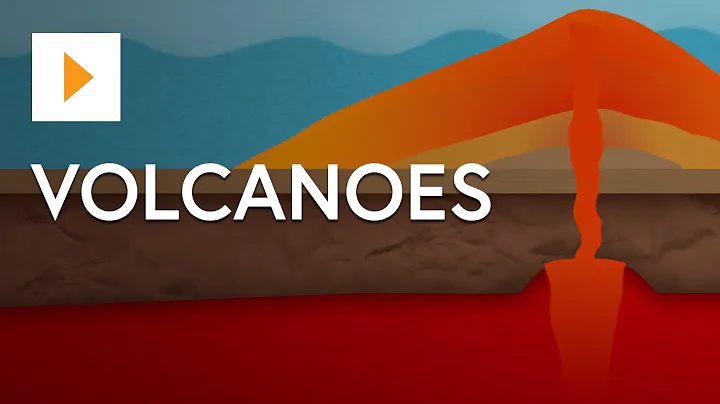A few days ago, the Event Horizon Telescope (EHT) cooperative organization held simultaneous press conferences in various places around the world, including Shanghai, to show the public the first photo of the supermassive black hole at the center of the Milky Way.
is similar to the first black hole photo three years ago. This photo is a simple orange halo, but the process of "taking" and "developing" the photo has twists and turns. To this end, more than 300 researchers from 80 research institutions around the world (including 17 astronomers from 7 units in China) spent a lot of energy and developed new complex tools, and finally obtained the results by combining thousands of images using different calculation methods. The optimal images are averaged to generate the final image.
scientific results, simple and beautiful. The process of exploration is full of twists and turns and hardships. This newspaper specially invited the Shanghai scientists who participated in the imaging of this photo to share the story behind the imaging of the black hole in the center of the Milky Way.

Image of the Milky Way and the black hole at the center of the Milky Way. (Image copyright belongs to the Event Horizon Telescope Collaboration 2022 and Zheng Xingwu Mark Reed 2019)
Recently, the first image of the supermassive black hole at the center of the Milky Way was unveiled. Perhaps to the public, it is another orange halo, but the shape is slightly different from the one of the M87 black hole. But the complexity and difficulty of taking this photo are rarely known. To use a common analogy, this imaging is equivalent to taking a picture of rotating fireworks with a mobile phone. The pattern effect will be different every time. To make matters worse, the phone used to take pictures does not have an anti-shake function.
In recent years, teams that have “developed photos” of black holes have come from all over the world. When the "rinsing" work was started, no one may have thought that this process would be so repetitive and difficult. Some people quit midway, and some people persisted. Fortunately, we finally got a result that everyone recognized.
In fact, the series of papers published online on May 12 did not start writing this year. Some papers had completed their first drafts a few years ago and are just waiting for the final results of imaging. Among this series of papers, the black hole imaging paper was the first to be accepted by reviewers and journals, and the wisdom and sweat invested in this tortuous process were not wasted.
How complicated is the entire imaging process of the galactic center black hole? To give just one example, four different algorithmic working groups are involved in the photo "development" work alone, and the final photo is an average of all "qualified" photos. "Developing" photos goes through five main stages, each with its own characteristics. Due to space limitations, the author will only talk about our experience in one of the working groups we participated in - the "CLEAN" working group (CLEAN).
The first stage
was repeatedly imaged, and unexpectedly obtained "variable" results
On April 10, 2019, the Event Horizon Telescope (EHT) cooperation organization officially released the first black hole photo captured by humans - a photo of the supermassive black hole at the center of the Virgo galaxy M87 . Subsequently, the EHT cooperation team began to deal with another important target for simultaneous observation-the center of our Milky Way galaxy.
Science requires rigor and truth-seeking. Although there are many indirect evidences suggesting the existence of a supermassive black hole in the center of the Milky Way, astronomers at the time were not completely sure that the mysterious object was a black hole. Even the reasons for the award given by the related 2020 Nobel Prize in Physics were not clear. Just say "the discovery of a supermassive compact object in the center of the Milky Way."
Inspired by the first photo of a black hole, everyone hopes to work together to present the long-awaited photo of the celestial body in the center of the Milky Way. After all, this is our own galaxy.
At first, everyone still followed the working mode of the first photo of a black hole, and first independently imaged within each working group to increase the confidence of the imaging results. So, after getting the observation data, everyone began to show their talents. But a problem soon arises - the imaging feeling this time is completely different from the first black hole photo. The most confusing thing is that if the imaging is repeated several times, the photos developed will be different each time.
So the working group summarized everyone’s questions and asked colleagues who calibrated the previous data to carefully check the data and plan the second round of imaging work.

The global telescope participating in the EHT2017 project
The second phase
The ring appears, but the attitude is different
After about two or three months of careful review and updates, including more stringent data calibration, the imaging working group once again obtained The data is there, but the images are frustratingly varied.
The author still remembers that in the weekly internal discussions on imaging work, each working group gave various images: convergent, extended, bright spots facing up, down, left, and right. ...At that time, various working groups had begun to try to select different imaging control parameters to see whether the optimal images were consistent. The results showed that almost half of the working groups were able to obtain images of ring structures.
But everyone knows that this is not convincing to science. Therefore, in internal discussions, everyone is more silent. In fact, other imaging working groups have encountered the same problem, and everyone can't help but worry about whether this imaging can be successful. After
repeated this for several weeks, everyone believed that it was necessary to carry out larger-scale parameter selection and optimization. As a result, imaging work has shifted from a working mode where a single person spends half a day to a day processing an image to a working mode using supercomputers.
In the third stage,
joined the supercomputing team and took on more "development" tasks.
In order to effectively record the progress of "development" of photos, members of the working group will update the division of labor on a shared workbook. Looking back at the statistical records in the workbook, it is not difficult to find that a lot of work was completed using the supercomputer of the Shanghai VLBI astronomical processing platform.
In fact, at the end of the second phase, our team has debugged the supercomputer of the Shanghai VLBI astronomical processing platform and used it to complete rapid imaging work. Compared with colleagues using personal computers for imaging processing, supercomputers are indeed much faster. Therefore, every time the results are submitted in the second phase, we can always complete it first. Soon, the coordinator of the imaging working group came to contact and asked the team to share the imaging processing task with a larger parameter range.
At that time, this supercomputing platform was undertaking the "China Sky Eye" telescope (FAST), VLBI testing, and some routine processing tasks. However, considering the important value and significance of the galactic center imaging work, the Shanghai Observatory agreed.

Astronomers in the EHT observation room. (Photo courtesy of Shanghai Observatory)
To be honest, persistence is really not easy. Each time, tens of thousands of images need to be generated and then optimized repeatedly. Moreover, due to progress needs, we have to check whether the operation is normal from time to time. During the busiest time, the observatory's 400-core supercomputer is running non-stop operations every day, and often just after processing all the results, the weekly discussion time comes. In order to make the results as rigorous as possible,
also checks whether the processing results of different computers are consistent in the initial stage. It was found that 7 of the 4,000 test photos processed by the platform were different from the processing results of other computers. To this end, the team spent a weekend pulling the platform supplier to find the problem. Finally, it was found that because the platform was purchased earlier, there was a generation difference between the operating system and the new computer, which resulted in this difference of about two thousandths. After further testing of
, we found that the difference in the results of these seven images was only six or even nine digits after the decimal point of some data. The difference was almost negligible, so we could proceed with the subsequent processing with confidence.
The fourth stage
In the darkness before dawn, the work was once again in dilemma
After many iterations in the third stage, the imaging algorithm became more and more mature, and the imaging work finally ushered in a glimmer of light, but soon another problem appeared.
In order to check whether the generated real images are reliable, the "Cleaning" working group has simultaneously developed simulated data from eight different models that are similar to the observed data. In other words, if the algorithm and selected control parameters can invert all eight models, then the results of real data processing will be credible.In addition, the work will be handled by four groups using different algorithms. If everyone can get the same result, the probability of error is minimal.
In fact, everyone is basically sure at this time that a ring structure can be obtained from real data imaging. However, there are still some doubts within the working group because there is still one model whose simulation data cannot be restored using the parameters that have been painstakingly optimized. This model is called the "point Gaussian model", and its simulated data are similar to the observed data, corresponding to the convergence structure that some colleagues have obtained.
"In order to successfully include point Gaussian models, it is necessary to extend the control parameters of the algorithm." We were pleased to report this finding at a discussion meeting. Next, a more difficult problem arises. These extended control parameters are only useful for point Gaussian models, but cannot effectively reconstruct the simulation data of other models - the work seems to be in a dilemma.
The final stage
is full of twists and turns, and the "first photo" of the black hole in the center of the Milky Way finally becomes
Fortunately, there are more solutions than difficulties. The difficulty in VLBI data processing lies in calibration, because the performance and real-time observation conditions of each telescope are different. Recovering the true signal information is like finding a needle in a haystack. Fortunately, there is an observation quantity in the VLBI data, which is called "closed phase" in professional terms, which can reflect the structural information of the celestial body and is independent of the station calibration. Therefore, the working group further proposed to use the model obtained by closed phase calibration as the initial model input, instead of selecting a fixed geometric model according to the conventional practice.
At this time, a larger supercomputing platform joined the work, and soon all models and real data were effectively restored. This method also reached a consensus among peers. Finally, when the working group applied the algorithm and parameters that could reconstruct all models to the galactic center data, it was found that more than 95% of the resulting images had a ring structure. Although there are differences in the azimuthal distribution of brightness in different rings (mainly related to short-time scale changes in the galactic center), the working group finally generated the first image of the galactic center black hole released to the public through cluster analysis.

The making of the first image of the black hole at the center of the Milky Way. (Photo provided by EHT cooperative organization) Another detail of
is that the working group developed an automatic recognition algorithm for and to distinguish cyclic structures from non-cyclic structures, allowing each EHT member to manually complete the classification of 2,000 photos for comparison. Is there any obvious deviation between machine algorithm and manual distinction? Statistics show that the similarity between algorithms and artificial intelligence reaches more than 92%.
Postscript
The Shanghai VLBI astronomical processing platform, which was built at the end of 2014, has been responsible for domestic and international VLBI astronomical observation data processing for the past eight years.
Through this platform, scientific researchers obtained the first VLBI high-frequency interference fringes of the Shanghai 65-meter Tianma Telescope , which contributed to the successful establishment and opening of the East Asian VLBI Network; they obtained the first VLBI of the "China Sky Eye" telescope interference fringes, and undertook subsequent test and processing tasks; also obtained the first interference fringes observed in the 230GHz network in East Asia.
At the same time, the Shanghai VLBI astronomical processing platform is the first time in China to provide a processor platform for the primary product to an international geodetic service organization. So far, it has collected and processed data from almost all radio telescopes around the world, various observation wavelengths and various observation types. The raw data processed exceeds 5PB (equivalent to 5 million movies, which will take at least several hundred years to watch). The processed data results are published in high-level journals in various fields.
's processing of imaging data of galactic black holes this time is considered a "part-time job" of the Shanghai VLBI astronomical processing platform, and has also been recognized by international peers. In the acknowledgments of this series of papers, this platform is mentioned.
We have always believed that science is simple and perfect, but we also know that VLBI scientific discoveries are limited by observation equipment, and the difficulty of later data processing is inversely proportional to the perfection of the array. We are also pleased to see that EHT is still expanding and making technological innovations, and we firmly believe that with the help of my country's excellent site conditions, domestic observation facilities will be built as soon as possible and play their unique role.
Q: What is the significance of taking pictures of the black hole at the center of the Milky Way?
A: In the past few decades, people have suspected that the massive and dense object in the center of the Milky Way is a huge black hole, but there is no direct evidence. This photo provides the first direct visual evidence of the real existence of the supermassive black hole Sgr A* (Sagittarius A*) at the center of the Milky Way. A series of papers was published in a special issue of the Astrophysical Journal Communications.
Q: How were the photos of the black hole at the center of the Milky Way taken?
A: This photo was "taken" by a network of radio telescopes distributed around the world, organized by the Event Horizon Telescope (EHT). The EHT is a virtual telescope equivalent to the size of the Earth, consisting of eight radio telescopes distributed on the earth. This photo is an average of different photos extracted by the EHT team from the 2017 observation data of Sgr A*.
Q: Why is the black hole in the center of the Milky Way closer to the earth, but more difficult to photograph than the central black hole in M87?
A: The first black hole photo released by humans in 2019. The central black hole of M87 is 55 million light-years away from the earth, while the galactic center black hole is only about 27,000 light-years away from the earth. The black hole at the center of the Milky Way appears to be close to the earth, but its "size" is 1,500 times smaller than the central black hole of M87.
Therefore, it only takes a few minutes for the gas around the black hole at the center of the galaxy to make one revolution around the black hole at the center of the galaxy. This means that the brightness and pattern of the surrounding gas are changing rapidly as it is observed - a bit like taking a clear photo of a puppy chasing its tail. The central black hole of M87 is relatively static, making it easier to take clear photos.
In order to obtain imaging data, the EHT carried out multiple nights of observations of Sgr A*, collecting data for several hours each time. Researchers are also spending a lot of effort developing new and sophisticated tools to image it.
Q: In the future, will EHT take higher-definition photos of black holes?
A: The pace of observation and research on EHT has never stopped. In March this year, the EHT just completed a joint observation involving more telescopes. Continued expansion and technological innovation of the EHT will allow scientists to share more dramatic photos, including black hole "movies."
Shooting a "movie" of the black hole at the center of the Milky Way is the pursuit of the next generation EHT. The submillimeter-wave VLBI telescope that is being planned and constructed in our country will also be able to participate in the 24-hour uninterrupted relay observation of Sgr A* after its completion.
Author: Jiang Wu, Lu Rushen, Shen Zhiqiang (the authors are all members of the EHT cooperation group, Shen Zhiqiang and Lu Rushen are researchers at the Shanghai Observatory of the Chinese Academy of Sciences, and Jiang Wu is an associate researcher)
Editor: Xu Qimin





















